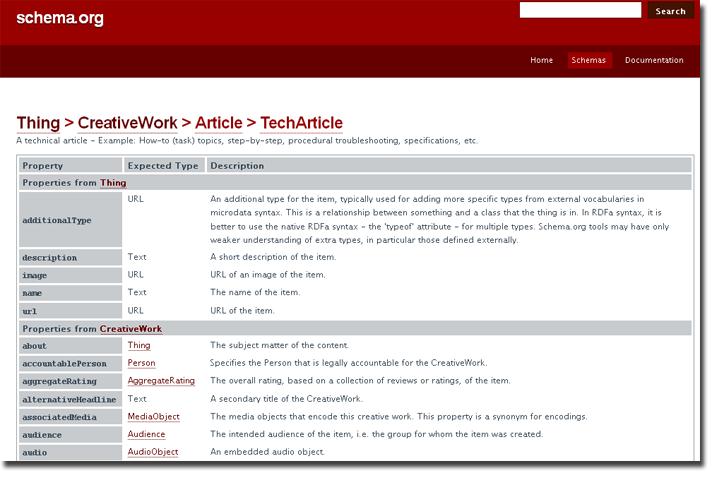We're all in constant search of that extra 'oomph' which will give our websites a boost in the search engine
rankings, edging out the competition and pushing us ever-so-close to number one in our particular field of
expertise. Although not a silver bullet, Schemas
are the next best thing to it, and will most definitely give you an advantage over your competitors who have
not implemented this indexing structure.
The Schema markup you will use to improve your site is provided by Schema.org. Google, Bing, Yahoo!
and Yandex have all agreed that using this standardized code will set a precedent in search engine indexing,
allowing navigators to quickly locate desired, highly relevant information.
The necessity for this standardization becomes all the more apparent when you realize that these search
engines have to muck through over 13,000,000,000 website files to locate the appropriate results for each and
every search query. Schemas give search engines direct access to structured data and thus providing much more
accurate results to the public.
The key here is to properly mark up your web files so that the information is recognized extremely quickly
as being relevant for specific search queries. Instead of your site ending up in a slush pile at the bottom
of a mass of websites, it may finally have a chance of making it to the top and being seen.
Schemas rely on an agreed-upon markup vocabulary that, when utilized to their full potential by
front-end developers and others, will significantly enhance your web presence. The page you are reading
right now utilizes Schemas. Here is an example of Schema specific HTML tags pulled directly from this file:
<div itemscope="itemscope" itemtype="http://schema.org/TechArticle">
<h1><span itemprop="headline">How to Use Schemas to Improve Site Indexing</span></h1>
<p><span itemprop="description">A tutorial on utilizing Schema specific HTML tags to increase your website's search engine visibility</span></p>
<p>written by <span itemprop="author">RJ Wattenhofer</span></p>
You can see that the headline, description and author designations in the white box match the headline,
description and author information at the top of this page. The code 'itemscope="itemscope" itemtype='
tells the search engines that the information to follow is the primary category for this web page.
The link 'http://schema.org/TechArticle' is the specific category (i.e. Tech Articles), with the link
itself providing a reference point for the search engines. The 'itemprop' covers the specific parcel of
information by wrapping it in span tags: In this case, the description and author.
And here is the code from the main body of the article:
<div itemscope="itemscope" itemtype="http://schema.org/Code">
<p>We're all in constant search of that extra 'oomph'...
The markup you use can be very subjective, with a particular article falling into several categories. Just use
your best judgement and pick whichever best describes your work. In this case I used
'itemtype="http://schema.org/TechArticle' to identify the main idea behind this article, but I also used
'itemtype="http://schema.org/Code' because I am providing specific code examples for the reader. Again, use
your best judgement on what applies where in a given piece of writing.
All of your Schema HTML tages are to be placed in the body of the HTML file, although I have seen one
or two people placing markup in the head section. According to Schema.org, the proper location is the body,
so I say we stick with that recommendation.
So now the search engines know that this page is a technical article about Schemas and that, in addition,
it is specifically a tutorial on how to use Schemas effectively (which should make them very happy, as I am
helping get the word out...).
The code above is a very general example on how to use Schemas. There are a whole myriad of
'itemtypes' and 'itemprops' that can be weaved and interlaced throughout the body of your articles.
Locations, phone numbers, start dates, end dates: These are just a few off the top of my head. Browsing
through the Schema.org website will give you a much clearer idea of what this structure encompasses and
the scope of the entire Schema project.
~ RJ Wattenhofer, April 24, 2013










